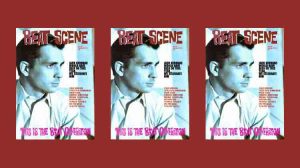
Although William Wordsworth once stated that he was “not a critic” and, in fact, “set little value upon the art” (Leitch 556), in his “Preface to Lyrical Ballads” he nevertheless proposed and discussed several controversial ideas that would become key components to his literary philosophy, securing the “Preface” as a significant and influential addition to the cannon of literary criticism. Two of Wordsworth’s most subversive propositions were his belief that poets should write about events “from common life,” expressing them in the “language really used by men” (556) and his seemingly paradoxical notion that “all good poetry is the spontaneous overflow of powerful feelings,” while at the same time being something which has been contemplated “long and deeply” (Wordsworth 562). These ideas of Wordsworth’s have been embraced, and even modified, by poets and writers throughout the generations since their inception and have lent their influence to the Modernist writers of the early twentieth century and perhaps even more so to the Postmodern Beat writers of the mid-twentieth century.
Wordsworth begins his “Preface” with a sort of disclaimer, warning readers of Lyrical Ballads that the subsequent poems may not (likely will not) live up to their expectations. He acknowledges early on the expectation that
. . . by the act of writing in verse an Author makes a formal engagement that he will gratify certain known habits of association; that he not only thus apprizes the Reader that certain classes of ideas and expressions will be found in his book, but that others will be carefully excluded (560).
Wordsworth then goes on to predict that “it will appear to many persons that [he] ha[s] not fulfilled the terms of an engagement thus voluntarily contracted.” He elaborates what he means by saying that readers “who have been accustomed to the gaudiness and inane phraseology of many modern writers, if they persist in reading [Lyrical Ballads] to its conclusion, will, no doubt, frequently have to struggle with feelings of strangeness and awkwardness” (561). Wordsworth had a clear sense of the controversy his ideas and new poems would stir up, thus he may have been rather pleased by the responses in later reviews of his work, in which, as Nathaniel Teich points out in his essay “Evaluating Wordsworth’s Revolution: Romantic Reviewers and Changing Taste,” “[s]ome reviewers explicitly considered [him] a revolutionary whose poetry and theory were an active force in changing values and established taste” (207).

After this brief heads-up to readers in the “Preface,” Wordsworth goes into detail about the characteristics of Lyrical Ballads that are sure to disagree with contemporary sensibilities and what his intentions are in writing such poetry.
Wordsworth explains that when he set out to write the poems, his objective was to take “incidents and situations from common life, and to relate or describe them, throughout, as far as was possible, in a selection of language really used by men,” while also applying to them “a certain colouring of imagination, whereby ordinary things should be presented to the mind in an unusual way . . . , and above all, to make these incidents and situations interesting” (561).
The reason for choosing situations from “[l]ow and rustic life,” Wordsworth explains, is “because in that condition, the essential passions of the heart find a better soil in which they can attain their maturity, are less under restraint, and speak a plainer and more emphatic language” (561). It was Wordsworth’s belief that in such a condition “our elementary feelings co-exist in a state of greater simplicity” and thus “are more easily contemplated and more forcibly communicated” (561). Essentially, what Wordsworth is proposing is the idea that a poet should be able to say what he aims to say, and do so just as effectively, using unadorned language. This sentiment is echoed over a century later by the Modernist poet Amy Lowell in “The New Manner in Modern Poetry.” Lowell describes modern (early twentieth century) poets’ “insistence upon poetry in unpoetic things.” Modern poets, says Lowell, are “never tired of finding colors in a dust-heap, and shouting about them . . . . They use colloquial language” because “‘poetic diction’ has sunk to ill repute” (535). This latter notion can be traced back almost directly to Wordsworth’s advocacy of using the language of common men “because such men . . . convey their feelings and notions in simple and unelaborated expressions” (561).
Teich explains that, while critics often focused on Wordsworth’s straying from formal conventions, “[t]he aspect of Wordsworth’s revolution to which reviewers gave increasing attention . . . was not simply his revolt against artifice, embellishment, and poetic diction, but rather the equalitarian implications of his use of humble subjects.” Critical perceptions were mixed, however, as to Wordsworth’s intention behind using such “humble subjects.” Teich says certain reviewers believed the intention was to elevate the subjects, while others believed it was to de-elevate the lofty demographic of the aristocracy ‘to a level of humanity’” (208).
Regardless of his intention, Wordsworth’s employment of such elements is precisely the sort of thing that breaks the formal (though unwritten) author/reader contract that implies certain expectations will be satisfied and that certain expressions will be “carefully excluded.” According to Teich, one critic “reproached [Wordsworth] for preferring low and trivial subjects that others could not receive with pleasure and for connection to those subjects particular associations which others could not share” (211). Many critics, in fact, “denied that low or mean language could be raised to poetic value, so they insisted that humble, commonplace, and homely subjects could not acquire permanently elevated poetic status” (211).
But Wordsworth nevertheless takes the risk of subverting these conventional beliefs and expectations in order to challenge what he views as one of many in “a multitude of causes, unknown to former times, [that] are now acting with a combined force to blunt the discriminating powers of the mind, and unfitting it for all voluntary exertion to reduce it to a state of almost savage torpor” (563). In this rather sweeping statement, Wordsworth is commenting on the way convention subdues both artists and their audience. In his 1802 Appendix to the Preface, Wordsworth tries to “give an exact notion” of what he means in his assertion that these forces were “unknown to former times” and that they are “blunt[ing] the discriminating powers of the mind.” He essentially believes that early poets had more passion than contemporary poets. He claims these poets, while writing passionately, nevertheless “wrote naturally, and as men.” These early poets’ passion thus imbued their work, making the natural language of men both “daring, and figurative” (576). Wordsworth argues, however, that
“[i]n succeeding times, Poets, and men ambitious of the fame of Poets, perceiving the influence of such language, and desirous of producing the same effect, without having the same animating passion, set themselves to a mechanical adoption of those figures of speech, made use of them, sometimes with propriety, but much more frequently applied them to feelings and ideas with which they had no natural connection whatsoever. A language was thus insensibly produced, differing materially from the real language of men in any situation (576).
In short, poets got lazy and constructed a dolled-up form of language with which to express their ideas to an audience that did not know any better. And because poets were considered authorities on language, Wordsworth continues, “this distorted language was received with admiration” (577). Additionally, Wordsworth supposes that the use of meter (a convention from which even he rarely, if ever, strays) was applied at first as a way to further enhance the reader’s experience but eventually succeeded in widening the gap between “the genuine language of Poetry” and that of “common life.” Reiterating, Wordsworth stresses that early poets “spake a language which, though unusual, was still the language of men.” That being said, he asserts that “[t]his circumstance, however, was disregarded by their successors; they found that they could please by easier means” (577).
In “Beat Generation Literary Criticism,” Matt Theado expresses a similar sentiment about the laziness of the culture that sprang up around the Beat phenomenon. Theado claims that “[f]ollowing [quintessential Beat] Kerouac’s lead, many readers dismissed the bearded, bongo-tapping hangers-on of the fifties and sixties as simple bohemian wannabes whose presence demeaned the serious artistic work of the Beat writers” (758). While many post Second World War critics (as well as many post-war Americans) argued that Beat writing was anything but “serious” and “artistic,” Theado believes it has become “clear that the Beats have heralded a refreshing new age of social and literary freedoms that was taken up by the next generation of writers and activists” (748).
In much the same way as Wordsworth and the Modernists of the early twentieth century, “the Beats confronted the status quo in literary art. . . . Their works were branded as ‘rebellious’ and ‘obscene’ in both their subject matter and their form (or what contemporary critics saw as lack of form)” (748). But unlike the Modernists before them, who certainly disrupted literary conventions (perhaps even more radically than Wordsworth a hundred years earlier), the Beats “announced a fresh kind of poetry for a new unsophisticated audience.” Theado explains, “Although [the Beats] were generally appreciative of Ezra Pound and T. S. Eliot [two of Lowell’s Modernist contemporaries], the Beats loathed the ivory-tower entrapment of poetry” (749) that had resulted from their philosophies.
In “Deconstructing and Reconstructing the Beats: New Directions in Beat Studies,” Robert Bennet, in attempting to sum up the Beat philosophy, embraces Clinton R. Starr’s view that “the Beat Generation” is more than “a small group of literary celebrities . . . , beatniks and ‘week-end Bohemians’ who frequented jazz clubs”; rather, they are “a vibrant counterculture that facilitated individual resistance and collective political activism” (178).
While it is questionable whether the Beats facilitated any sort of activism on the political front (their political influence may best be seen in the hippie movement of the late sixties, though even then perhaps less political than social), they certainly acted in favor of “individual resistance,” at the very least in terms of literary convention.
The manner in which the Beats most explicitly—though perhaps unconsciously—subscribed to Wordsworth’s philosophy, was that they seemed to agree with the idea of poetry (and prose, for that matter) being “the spontaneous overflow of powerful feelings.” In an essay titled “Beyond the Beats: An Ethics of Spontaneity in the Poetry of Rolf Dieter Brinkman,” Jonathan Woolly writes, “Spontaneity was perhaps the keyword in the Beats’ aesthetic philosophy,” showing they had “a will to dissociate themselves from a European literary tradition they found tiresome, and to reject the assents and conformities of post-war American society” (2). This description perhaps brings us closer to defining the Beat Generation (at least in terms of a literary philosophy) than the previous definition expressed by Bennet. But while the Beats appeared to share Wordsworth’s belief in spontaneity, where they seemed to diverge from his view is in the part of Wordsworth’s statement where he says that, while “all good poetry is the spontaneous overflow of powerful feelings,” it must be acknowledged that “Poems to which any value can be attached, were never produced on any variety of subjects but by a man, who being possessed of more than usual organic sensibility, had also thought long and deeply” (562). This part of Wordsworth’s philosophy is what often confuses readers; after all, if you meditate on something how can it be spontaneous? Well, Wordsworth believed that if a poet exercises his contemplative faculties through constant reflection on previous experiences of powerful emotions, he can learn to access those feelings at will, thus lending to his work the same passion that arose during the initial experience; furthermore, reflection—and revision of the work itself—allows the poet time to craft the experience appropriately as to convey that passion directly to the reader as accurately as possible. Wordsworth explains this very idea in the “Preface,” saying,
. . . [O]ur continued influxes of feeling are modified and directed by our thoughts, which indeed are the representatives of all our past feelings; and, as by contemplating the relation of these general representatives to each other we discover what is really important to men, so, by the repetition and continuance of this act, our feelings will be connected with important subjects, till at length . . . such habits of mind will be produced, that . . . we shall describe objects, and utter sentiments, of such nature and in such connection with each other, that the understanding of the being to whom we address ourselves, if he be in a healthful state of association, must necessarily be enlightened, and his affections ameliorated (562).
This is Wordsworth’s convoluted way of saying that through reflection we cultivate the ability to more accurately represent the powerful emotions that are spontaneously elicited “in a state of excitement” (562). Because our feelings are directly influenced by our past associations, through contemplation we can better learn to appropriately identify, and almost anticipate, spontaneous feelings according to our knowledge of what types of feelings we associate with certain experiences. In other words, the better poets get at understanding the relationship between what they experience and what they feel, the better they will become at having unlimited access to their past experiences, and will thus be better equipped to convey such experiences to readers.
The idea of reflection was inextricably linked to the idea of revision for Wordsworth. But for all his talk of deviating from traditional literary norms, he still firmly believed in craft. While he favored common subjects, he nevertheless expressed these subjects in “metrical arrangement” (559). Consider his quasi-pastoral poem “Michael,” which is written in unrhymed iambic pentameter (aka blank verse) yet perhaps most exemplifies his use of common subjects and common speech:
If from the public way you turn your steps
Up the tumultuous brook of Green-head Ghyll,
You will suppose that with an upright path
Your feet must struggle; in such bold ascent
The pastoral mountains front you, face to face (1523).
In the next stanza, Wordsworth introduces readers to the poem’s namesake, Michael:
Upon the forest-side in Grasmere Vale
There dwelt a Shepherd, Michael was his name;
An old man, stout of heart, and strong of limb.
His bodily frame had been from youth to age
Of an unusual strength: his mind was keen,
Intense, and frugal, apt for all affairs,
And in his shepherd’s calling he was prompt
And watchful more than ordinary men (1524).
Throughout the entire 482-line poem, Wordsworth depicts the life of Michael with language such as this. And while more modern readers may view this poem as still rather formal—which it is in terms of metrical arrangement—such expressions were unheard of in Wordsworth’s time. Nevertheless, such a work would unlikely be produced without considerable meditation and toiling in the name of craft.
But as far as the Beats were concerned (or so we have been led to believe), the idea of reflection and revision was one they seemed adamant to oppose. In Woolly’s essay, he quotes Jack Kerouac as saying, “If you don’t stick to what you first thought, and to the words the thought brought, what’s the sense of bothering with it anyway, what’s the sense of foisting your lies on others? What I find really ‘stupefying in its unreadability’ [a quote from a critic regarding Beat writers] is this laborious and dreary lying called craft and revision.” Woolly goes on, however, to challenge Kerouac’s statement, which seems to proclaim a “mode of writing” that is “apparently only committed to unadulterated honesty,” by examining “the relationship of spontaneity and craft or premeditation referred to by Kerouac” (2). Woolly begins by questioning if the two ideas need be, or if they even can be, mutually exclusive. He asks, “Does not the act of writing always require a degree of craft, even if the author claims to be committed only to spontaneity as Kerouac does” (2)? Woolly believes that indeed it does; in fact, he harkens back to Wordsworth’s assertion that our knowledge and experience is the sum of our associations from past experience. He explains that “ideas can ‘just come to us’ from different levels: from the meeting of our receptive or creative minds with unexpected circumstances (the idea only arises in that moment, representing perhaps ideal spontaneity), from a pool of knowledge we did not foresee tapping, or from a pool we knew we would draw on.” Woolly further argues that “craft is not merely potentially beneficial to the project of spontaneity; it is in some ways a necessity of writing . . . . After all, what may have been the product of an author following his free will and abandoning premeditation, may not be received as such by the reader” (5).
Woolly adds a bit of humor to his critique of Kerouac’s statement by saying that for him “to be perfectly honest he would have to find some way of hooking up a wire between his brain and the sheet of paper before him.” What he means is that no matter how much a writer claims his work is the product of spontaneity, he will always have to “make a leap between impulse and language,” because “by the time the first word comes into his head the sensation may already have been distorted, simplified, or even displaced” (5). Quoting Wordsworth on this very topic, Woolly further bolsters his argument: “As Wordsworth points out, ‘it is impossible for the Poet to produce upon all occasions language as exquisitely fitted for passion as the real passion itself suggests’,” which is precisely why, according to Wordsworth, and contrary to Kerouac’s view, reflection and revision are vital aspects of producing poetry meant to accurately and honestly capture a particular experience. “As soon as the real author starts the process of committing sensations onto paper or the screen (and begins to think in language),” Woolly states, “he is subject to associations triggered by the preceding words he has chosen” (5). Furthermore, the associations that are triggered by the words are associations we connect to those words through memories of accumulated knowledge and past experience. So from the very instant the writer begins to express himself “[t]he world he set out to share with the reader has already changed by the act of setting it out” (6).
Woolly wraps up the section of his essay that focuses on the relationship between spontaneity and premeditation (or reflection, as it were) by showing the inherent paradox in the word spontaneity itself. He claims that the Roget’s Thesaurus places the word “under involuntary, in the sense of ‘unassenting,’ and voluntary, in the sense of ‘unsolicited, uncalled for, self-imposed, supererogatory.” He argues that this contradiction means that a writer must at once be vigilant and submissive. He asks, “Does this not mean . . . that a spontaneous writer would have to be on his guard, on the one hand, in order to be sure he is not assenting to any heteronomous rules or norms, while, on the other hand, allowing his writing to gush out with abandon?” Woolly’s conclusion is that “spontaneity is not merely about the author offering us his internal inspiration,” but “[e]qually important is the author’s openness to that which he experiences” (6). Citing Wordsworth once again, Woolly closes this part of his argument by saying that “while the poet capable of spontaneous creation possesses, in Wordsworth’s words, a ‘[superior] disposition to be affected more than other men by absent things as if they were present,’ spontaneity” says Woolly, “also involves a readiness to be inspired by what is there” (7).
Sticking with Kerouac’s work and attitude as the example of the Beat philosophy (though there were many other writers of the Beat Generation that would ideally be addressed here as well), it is worth mentioning, if not citing entirely, Kerouac’s seriousness about his notions of honest, spontaneous writing; in fact, he actually wrote the rule book, if you will, on breaking the literary rules. In his short, though clearly thought through sort of How-To guide or checklist called “Essentials of Spontaneous Prose,” Kerouac lays out what he feels are the crucial conditions for writers to achieve uncompromised honesty in their work. Without quoting each description, which would take up a couple pages at least, suffice to say that the essentials of spontaneous writing (for this philosophy surely also applies to poetry), according to Kerouac are the “Set-up,” which is simply the placing of the object in view, either in reality or from memory; “Procedure,” which is the free-flowing, jazz-like expression of language; “Method,” which is the disregard for periods between “sentence-structures already arbitrarily riddled with false colons and timid, usually needless commas—but the vigorous space dash separating rhetorical breathing (as a jazz musician drawing breath between outblown phrases)”; “Scoping,” which is more or less a stream-of-consciousness approach to writing, with “no discipline other than rhythms.” If the writer “satisf[ies] [him]self first, then the reader cannot fail to receive telepathic shock and meaning-excitement by same laws operating in his own mind”; “Lag in Procedure” which is “[n]o pause to think of proper word but the infantile pile up . . . till satisfaction is gained”; “Timing,” which is the absence of revision except “obvious rational mistakes, such as names or calculated insertions” (57-58); “Center of Interest,” which is not writing with a “preconceived idea of what to say about image,” but rather “from the jewel center of interest in subject of image at moment of writing, and writ[ing] outwards, swimming in a sea of language to peripheral release and exhaustion”; “Structure of Work,” which is “follow[ing] roughly outlines in outfanning movement over subject . . . (run your mind over it, once), arriving at pivot, where what was dim-formed ‘beginning’ becomes sharp-necessitating “ending”; and finally, “Mental State,” which is to “[i]f possible write ‘without consciousness’ . . . allowing subconscious to admit in own uninhibited interesting necessary and so ‘modern’ language what conscious art would censor” (58).
While Kerouac’s guide to spontaneous writing may seem ludicrous to some, he is nevertheless dedicated to the Beat philosophy he was instrumental in developing. And while the Beats seem to deviate from Wordsworth’s ideas when it comes to reflection and revision, he clearly (even if unbeknownst to them) had an influence on their resistance and departure from convention. Where Wordsworth felt that the only way to come close to an honest account of a passionate experience is through contemplation and craft, Kerouac and the Beats felt that honest representation depended on submission to the relentless flow of association. But no matter how much the Beats profess honesty by way of pure, spontaneous expression, Woolly’s essay poses the possibility that there really is no such thing.
Theado reminds us that “[t]he definition of ‘Beat generation’ has always been hazy and unstable,” but “one does not have to be a bona fide member of a group to respond to a common poetics” (760). This statement, which says a person need not be a Beat to connect with the Beats, can also be applied to the connection between Wordsworth and those that succeeded him. To what degree the Beats were influenced by Wordsworth is debatable, but, as Teich points out, critics (both those in favor of and those opposed to his ideas) viewed “Wordsworth as a nonconformist to established rules in his conflict with insensitive and unsympathetic critics and readers” (216), a statement that could just as easily have been written with regard to Kerouac and his contemporaries a century and a half later.
Works Cited
Bennet, Robert. “Deconstructing and Reconstructing the Beats: New directions in Beat Studies.” College Literature 32.2 (2005): 177-184. MLA International Bibliography. Web. 29 Oct. 2013.
Kerouac, Jack. “Essentials of Spontaneous Prose.” The Portable Beat Reader. Ed. Anne Charters. New York: Penguin, 1992. 57-58. Print.
Leitch, Vincent B. “William Wordsworth.” The Norton Anthology of Theory and Criticism. 2nd ed. New York: 2010. 556-559. Print.
Lowell, Amy. “The New Manner in Modern Poetry.” The Bedford Anthology of American Literature. 3rd ed. Vol. 2. Eds. Susan Belasco and Linck Johnson. Boston: Bedford, 2013. 535-538. Print.
Teich, Nathaniel. “Evaluating Wordsworth’s Revolution: Romantic reviewers and Changing Taste.” Papers on Language and Literature: A Journal for Scholars and Critics of Language and Literature (Edwardsville, IL) (1975): 206-23. MLA International Bibliography. Web. 21 Sept. 2013.
Theado, Matt. “Beat Generation Literary Criticism.” Contemporary Literature 45.4 (2004): 747- 61. MLA International Bibliography. Web. 10 Oct. 2013.
Woolly, Jonathan. “Beyond the Beats: An ethics of Spontaneity in the Poetry of Rolf Dieter Brinkman.” College Literature 30.4 (2003): iv. MLA International Bibliography. Web. 29 Oct. 2013.
Wordsworth, William. “Michael”. The Norton Anthology of English Literature. 8th ed. Vol. B. Ed. Stephen Greenblatt. New York: 1523-1533. Print.
—. “Preface to Lyrical Ballads.” The Norton Anthology of Theory and Criticism. 2nd ed. Ed. Leitch, Victor B. New York: 559-579. Print.





emilyrose9 says
Appreciating the commitment you put into your website and detailed information you present. It’s great to come across a blog every once in a while that isn’t the same out of date rehashed material. Fantastic read! I’ve saved your site and I’m adding your RSS feeds to my website.